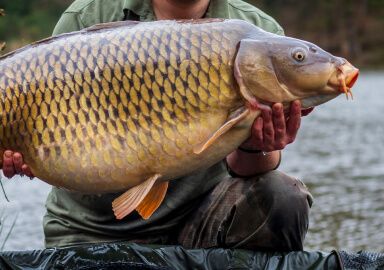Pike Asp
Endemic to Central Asia, the pike asp is a predatory species of the carp family that looks like a cross between pike and asp and is a rare catch for a Western recreational angler.
View 2 listings
2
listings
–
price starting from
2
countries
Where and When?
Pike asp distribution is limited to the Aral Sea basin in Central Asia, the rivers of Amu-Darya, Syr-Darya, and their tributaries. It can be found in Kyrgyzstan, Uzbekistan, and Turkmenistan, but the best recreational fishing opportunities exist in Tajikistan. When looking for a pike asp fishing trip, mind that this species is commonly confused with both pike and asp, so double-check the location before booking.
Pike asp can take the bait all year round, but many countries in the area have closed fishing in the spring, to protect the populations at the vulnerable spawning time. In Tajikistan the closed season is from April 1 to June 15. As the climate of the lowlands, where the pike asp exists, is rather warm, winter months from November to March may be more comfortable.
About Pike Asp
The pike asp (Aspiolucius esocinus) is a unique predatory fish species native to the Aral Sea basin of Central Asia. It belongs to the same family as the carp, but looks like a cross between the asp and the pike, thus the name. To the local anglers, the head of pike asp appears somewhat bald, and they sometimes call this species “bald asp”. The pike asp is a popular object for both recreational and subsistence fishing, but only a handful of Western anglers can boast of having landed this fish.
This fish has a long body, covered with small, dense scales, dark greyish or blueish on top and lighter below. The pelvic and anal fins are reddish, while others are greyish. It is distinguished from the true asp by its rounded, rather than flattened, belly, and a flattened head with the lower jaw longer than the upper. Pike asp reaches maturity at five or six years of age. At this stage a fish would be about 20 in. (50 cm.) in length and weighs some 6 ⅔ lb (3 kg.). The world angling record is not set.
The pike asp inhabits slow-moving rivers with murky waters. It is a predator that waits for its prey in ambush, and then makes a powerful burst to grab it. It has powerful jaws, but no teeth and a small stomach, so it takes only small fish. It is listed as endangered, as its range and numbers are decreasing due to environmental issues, above all building of dams. Apparently, this species can’t exist in stale waters, and if there is no current, it leaves the area as the reservoir fills.
How to Catch?
Spinning is perhaps the most popular way of taking this fish. Use smaller lures, as the pike asp can’t handle prey that is very big, and be active, searching the river or channel for the place where the predator is lurking in ambush, waiting for its prey. If there's cover such as fallen trees, cast near it. With pike asp's preference for muddy waters, fly fishing is not likely to be effective, but trolling, provided the river is big enough, can work well. You may also catch pike asp on a live bait.
Actually, the techniques that work for asp and northern pike should work for pike asp, too. But don’t hesitate to ask your guide, or local anglers, for tips on where to cast, how to retrieve, and how to handle the fish once caught. The people of Central Asia are very friendly, helpful, and determined to make sure the guest has a good time. Book a fishing trip after pike asp on BaitYourHook.com and become one of the few people who can speak about catching this fish from experience!









